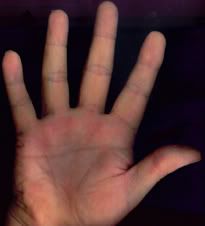
In 1960 Bell Labs built a giant radio telescope in Holmdel, New Jersey as part of the Echo Satellite system. The echo Satellites where large metallic balloons used as reflectors for radio waves to send transmissions over wide areas. Obsoleted by the Telstar satellite in 1962 the telescope caught the eyes of Bell Lab Radio Astronomers Arno Penzias and Robert Wilson.
As soon as they began to use the telescope they became aware of an annoying background signal similar to static on a radio. Consisting of a uniform microwave signal coming from all directions it was at first assumed it was an artifact of the telescope itself. Although it didn’t interfere with the Echo program, they needed to get rid of it make the types of observations they were planning.
After four years of studies ruling out possible sources they reached out to Robert Dicke at Princeton University. Dicke was pursuing the Big Bang theory and postulated that if there had been a Big Bang the residue would now be in the form of a low level background radiation throughout the universe.
At first they discounted the theory that the noise they were dealing with was in fact the background radiation postulated by Dicke. In fact others during the 1950s had also observed this radiation but didn’t know what it was. However by the mid 1970s, based on the work of Penzias, Wilson and Dicke as well as earlier work by Edwin Hubble, the Big Bang Theory had become the standard model. Penzias and Wilson received the 1978 Nobel Prize in physics.
Enter the COBE Satellite

The next step in mapping this Cosmic Microwave Background Radiation (CMB) was carried out with the use of NASA’s COBE satellite by US scientists John C Mather – senior astrophysicist at the US Space Agency and George F Smoot – University of California, Berkley physics professor. Although the resolution was fairly low, they were able to produce the first precise measurements of the CMB. The pair was awarded the 2006 Nobel Prize in physics for their research.
The next step is the WMAP.
In 2001 NASA launched the Wilkinson Microwave Anisotropy Probe (WMAP) to further study the CMB with high resolution instruments. Initially proposed as a two year mapping mission it has been extended until 2009. Several sets of papers detailing their findings have been released by the mission’s science team.Example of the progress made in the resolution of these various instruments. The red band is the microwave radiation from our own galaxy.
Among the latest findings is a large void in the universe. Although other such holes have been found and are expected, the immense size of this void – 10,000 times the size of our galaxy at one billion light years across – is way beyond what can be explained by current theories. Some scientists have put forward the theory that it is caused by a giant knot in the universe known as a topological defect.The Void

University of North Carolina at Chapel Hill physics Professor Laura Mersini-Houghton has a different interpretation. She is convinced that this void, found in the constellation Eridanus, is in fact the imprint of another universe beyond our own.
Should her theory of Entangled Universes prove correct, it would bring new support to the string theory as well as other debates central to the science of astrophysics. Her theory is such that one is able to make testable predictions which can either prove or dispute the theory. Her model predicts two such voids, one in each of the North and South hemispheres of the universe. The currently discovered void is in the Northern hemisphere. Her team expects further observations by WMAP as well as other cutting-edge experiments will prove her correct, leading to a whole new way of cosmological thinking.
The expanding universe.



























Yet the universe has boundary, but human eye & minds are too little "see" them even with cope, wmap, hubble, or other earth-based telescopic observations, etc.
ReplyDeleteSee this NASA scientific news/journal:
http://www.nasa.gov/mission_pages/mars/news/marsmethane_media.html
but later there is an update:
http://www.sciencemag.org/content/342/6156/355.abstract
Means that you just can observe "something" but you can not prove "anything" until you have the device at the observation object (Mars). The Mars' distance is nothing compare with universe, yet NASA fail to prove its preliminary "believes".. But don't worry, NASA still has abundance of "science fiction" outlook since Neil Amstrong "landed" his foot on the moon though..